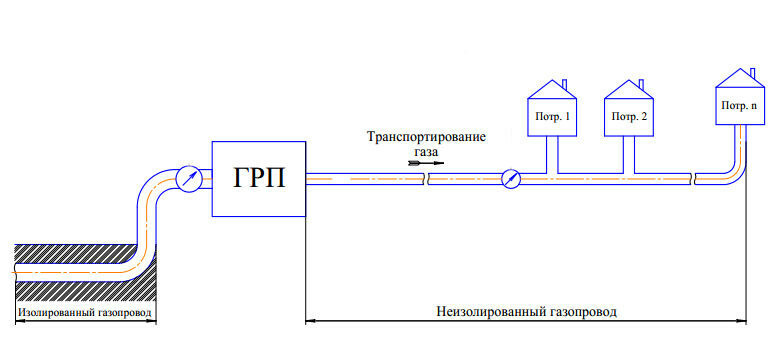Do you already know what convection is in a gas oven, and what amenities are provided to you with this function? Agree that forgetting about burnt and unbaked dishes, entrusting the miracle oven with taking care of the quality of cooking is a tempting prospect. And the acquisition of additional conveniences with the help of the new function expands the possibilities of any housewife.
We will talk in detail below about the possibilities, advantages and disadvantages, about ways to use convection for your own benefit. We will also consider the operating modes, we will give recommendations for choosing a convection oven.
The content of the article:
- Purpose and principle of operation of convection
- Overview of pros and cons
- Convection modes and control panel
-
The nuances of working and shutting down the fan
- Fan shutdown methods
- When should you contact the service center?
- Installation and operating safety
- Features of the use of equipment
- Tips for choosing a convection oven
- Conclusions and useful video on the topic
Purpose and principle of operation of convection
When cooking food, heat is transferred in several natural ways. By lowering the pan closer to the heating element, switching the heating power regulator or stirring the product, we control the transfer of heat.
Therefore, so that nothing burns and does not dry out in the oven, the hostess has to intervene several times in the cooking process, releasing heat. Are we passing by many possibilities, leaving the convection process to drift?

Natural ways of transferring heat seen in everyday life. In a conventional oven, most of the time, food is cooked without our intervention.
Conventional ovens have the main heat source at the bottom and the chamber is heated by radiation and natural convection. Due to the dishes preventing heat transfer and the low thermal conductivity of the air itself, a significant temperature difference arises in the chamber volume, fraught with burning or non-baking. Can the situation be improved?
Equipping the oven with a special fan and exhaust system, the developers added the function forced convection to eliminate temperature differences. Thanks to the improvement, several new possibilities have appeared, for example, quickly warming up the chamber, obtaining an evenly browned crust and even saving.
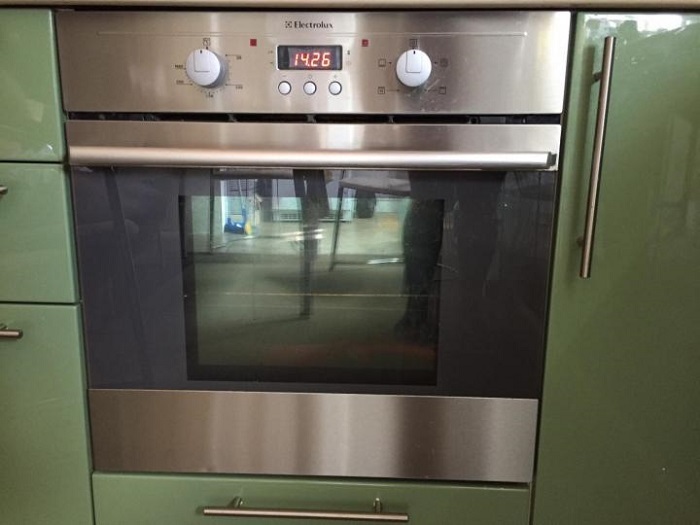
Externally, ovens with convection function are similar to conventional ones, they are distinguished by equipping with a convector, additional heating elements, a regulator for selecting the operating mode
The principle of operation of such an oven is convection. The device uses forced distribution of heated air masses in the volume of the chamber, in as a result, either uniform heating is achieved, or the creation of zones with specified temperature conditions.
Heat at a given rate is removed from the heating elements by one or more convectors.
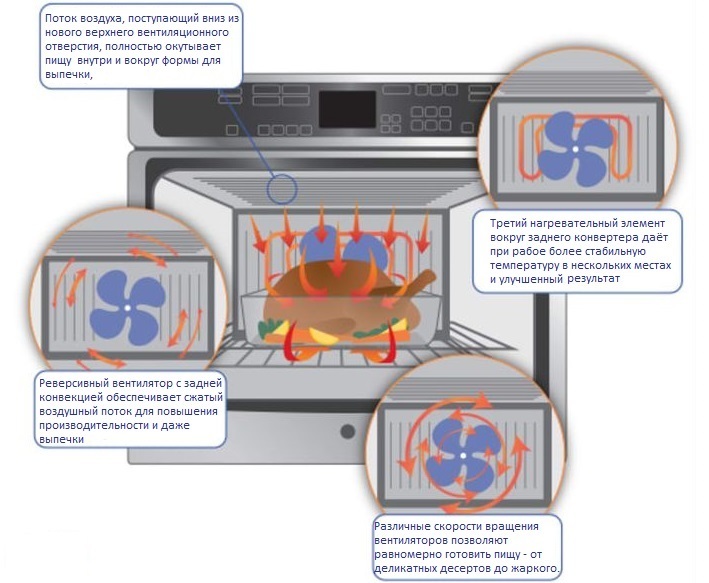
The air technology used in convection ovens allows you to cook food in a new way. Fans play an important role in controlling heat flow during the baking process.
Heating of conventional (non-convection) and the simplest convection (or traditional-convection) gas ovens (hereinafter referred to as GD) is carried out by gas burners from below.
There can be several heating elements in a more complex convection-type main engine - a gas burner at the bottom, a gas or an electric heating element at the top (for grilling), a ring electric heating element (CT) around the main fan.
Gas and electricity powered gas convection ovens belong to combined devices.

Convectors are simple (single fan) and complex (fan with heating element, use of several fans)
In most cases, the circulating fan is installed on the back of the oven. Its mains-powered motor can be reached from the outside of the unit. The impeller blades are inside the chamber and are covered with a grate.
In some models, a removable grease trap is additionally installed. It captures droplets of fat from the air coming from the chamber to the fan, and then the impeller is not so dirty.
There are also models of ovens with double convection, in which the fans are installed in different places of the chamber and, even, not at the same height. They can work in different modes. When they work at the same time, heat is distributed faster and more evenly. If one of them is turned on, then zones with different temperatures are formed in the chamber, which allows you to simultaneously cook dishes that require different conditions.

Heating elements inside a convection oven are often made of nickel wire coated with a ceramic binder and sealed inside a steel or brass tube
In addition to the fan involved in cooking, the design of the oven has an exhaust system, with the help of which the hot air circulating in the oven is removed. With the same system, moisture is also removed from the chamber, so this oven is more suitable for baking pizza and vegetables. Due to dehydration, caramelization occurs on the surface of the products with the formation of an appetizing crust.
In models with convection function, an internal fan is also installed, which is not visible from the side of the chamber. It is designed to protect the side surfaces of the oven, electronics and furniture in the vicinity from overheating. The mechanism turns on only at a certain temperature.
Oven owners have the option to enable or disable the convection function as they wish. In the latter case, the oven will work as usual.

Fan motor with ring TEN is equipped with overheating protection and permanently lubricated (high temperature) sealed bearings
Gas ovens with a convention function have protective systems, therefore they are also safe during operation, like electric ones. The burners are equipped with flame detectors and temperature relays.
Overview of pros and cons
What are the advantages of convection ovens? Fast food preparation Is the main advantage. The directional flow of hot air transfers more heat to the food, so food cooks faster and more evenly. Most dishes have about a quarter (25%) less cooking time. If you are cooking with recipes calculated for a conventional oven, remember to recount the time before setting the timer.
Many culinary experts note that convection cooking is preferable for frying, since the brown crust on the meat is formed more evenly under the influence of the circulating hot air. The juices remain inside the product, which makes the food more tender and tastier.
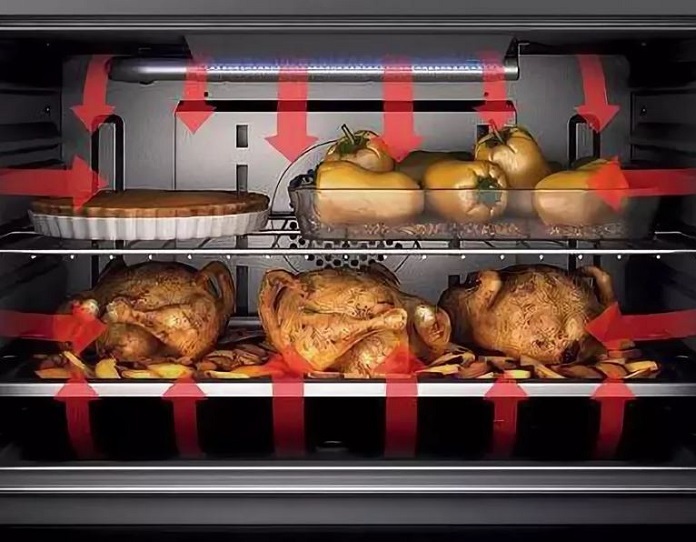
One of the advantages is the ability to cook several different foods at the same time. The products are not saturated with the smells of the “neighbors”. The main thing is not to overload the chamber space, hindering convection
Reduced cooking time - this is a reduction in energy costs, therefore you save money. Time savings also occur when several different dishes are being cooked at the same time. Energy and time savings are also achieved because there is no need to frequently open the oven to control the cooking process (when the door is opened, the already accumulated heat is lost). Reduces the time and energy required to preheat the oven before loading food.
New opportunities appear. Possibility is added cook several dishes at the same time, mode defrost and drying at low (up to 40OC) or room temperature.
Unfortunately, there were some drawbacks, the main one of which is high price. Models of the main engine with convection function cost almost half as much as their counterparts that do not have it. If you cook a lot, often and with pleasure, as well as if the purchase of an expensive device is not causes a tangible damage to the family budget, such a generous "advance" will not cause regrets.
Some products do not tolerate blowing during cooking, since the air flow is an external force capable of destroying the fine structure that forms during the ascent. For example, a "sissy" soufflé easily loses its shape, turning into something flat. Even cupcakes can lose their posture and become lopsided. When cooking delicate food, the convection function is turned off or set to a minimum, slowing down the air flow.

In general, the convention function makes the cooking process more pleasant, simpler and more economical. If when buying for models with this function, you have to pay more, then in the process of operation there is a saving of money
In any case, even if finances are not a weighty argument when choosing an oven, decide whether you need convection in a household gas oven or you can do without it, you have to on one's own.
Having solved the dilemma in favor of buying, you can familiarize yourself with information on the operating modes of ovens, as well as seek advice on choosing a particular model from a consultant.
Convection modes and control panel
The presence of a convector in the design of the oven ensures its operation in several modes.
Many of the modes listed below are not found in all oven models, so when choosing an oven, you should carefully study the instructions.

The use of the double convection mode allows you to quickly warm up the oven, create conditions for uniform cooking of products in the entire volume
Below are the types of modes in which the convector operates.
- In slow cooking mode the lower gas burner and the fan are operating simultaneously. A uniform heating of the space is created in the chamber. Large cuts of meat are ideally roasted in this mode. The mode is also used for heating food.
- Convection skewer. Bottom gas burner, skewer and fan included. Everything is distributed: the spit rotates the product, the fan creates a stream of uniformly enveloping heat. Crisp and juicy meat are provided.
- In pizza mode at the same time the lower heating element, the ring heating element and the fan are turned on.
- With double convection the task of creating air circulation is assigned to two fans. According to the manufacturers, in this way a particularly even temperature distribution in the oven is set.
- Fan grill. It is recommended to preheat the oven before placing the food. The fan works in conjunction with the top heater to soften the heat and allow the grilled meat to cook evenly. This mode is good for large pieces of meat and thick dishes.
- Turbo grill - the most energy-consuming mode. There are three heating elements and a fan that switches on and off periodically. Many intensive cooking products are cooked efficiently and quickly at the same time. The smells do not mix (and neither do the tastes).
- Steam convection mode allows you to cook food similar to steam. In this mode, you can cook boiled pork without wrapping it in foil. When using a temperature probe, the recommended temperature is 130 ° C.
- ECO mode suitable for preparing large quantities of food at the same time. Convector, top and bottom heaters included. Good for baking cookies and cakes.
Such a number of new modes, in addition to those that are already known to the hostess from the usual DG, may even be puzzling at first. But good habits develop quickly. Convection cooking is imperceptibly becoming the norm.

To determine the choice of the model, you can open the instructions and see what modes are provided in this model of the gas oven. They are indicated by pictograms
In addition, such equipment is available defrosting - usually indicated by a snowflake. Ventilation is carried out without turning on the burner. Air blowing replaces the cold air layers that envelop frozen food with warmer ones. As a result, the “air coat” does not form around the product and the defrosting process proceeds faster.
Drying mode possible when the convector is on and a temperature of about +50 ° C created by the lower burner.
Another useful option is rapid cooling of the oven, which usually happens when the fan is turned on without igniting the gas burner. This mode requires opening the oven door.
In a gas convection oven, as a rule, a mechanical type of control is used. It is simpler and therefore more reliable than the touch or electronic version.
For this, at least two regulators are installed:
- knob for setting the heating temperature;
- knob for setting the operating mode of the device.
In addition to "rotary" (mechanical) control, there are models with rotary-button or rotary-touch control. For example, Corting OGG 771, Bosch HGN 22H350 have a touchscreen electronic timer and rotary thermostat controls.

In the picture, the control panel of the ovens A) Bosch HGN 22H350 and B) Corting OGG 771 have a touch-sensitive electronic timer and rotary controls for the thermostat and function selection. The icons around the mode setting knob are pictograms that are not difficult to decipher
In addition to handles, the control panel also contains indicators that signal the operation of the device.
The nuances of working and shutting down the fan
In electric ovens, the convection fan turns on during preheating, even if you are not using convection cooking. About connecting a gas stove with an electric oven, we wrote here.
In gas stoves, it is not included during this period. During convection cooking, the convector usually runs for about 10 seconds, then turns off for about 40-60 seconds. The operating cycle of the convector in different modifications may differ, for example, work and rest for an equal amount of time.
Fan shutdown methods
Since there are many different models of convection gas motors, the fan shutdown process may vary.
Method # 1 - turn off convection
Turn off convection option. In some models of ovens, it is possible to turn off the convection function. The fan switches off automatically.
Method # 2 - open the door
On many models, opening the oven door immediately turns off the fan. It will turn on again when the door is closed. To switch off the convector, open the oven door during cooking.
Method # 3 - cool the oven
Turn off the oven and let it cool down. During cooling, the fan may remain on for a while. It will eventually shut down.
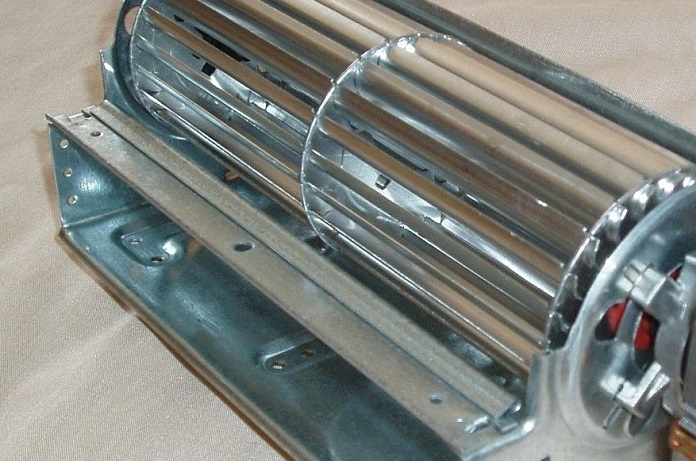
The cooling tangential fan is also called diametrical. It creates an even, flat flow of cooling air. The fan performs a double movement of the air flow perpendicular to the axis of the rotating impeller
The cooling fan is supposed to run until the oven has cooled down.
Method # 4 - switch the oven setting
If your oven is combined with a conventional one, switch the setting to normal operation. If the oven is a combination oven, switching to the normal setting in accordance with the manufacturer's instructions will usually turn off the fan.
Method # 5 - press the button
In addition to an internal fan that moves heat around the food area, some convection ovens have an exhaust fan to remove fumes, smoke and odors from the work area.
The device can have a control for selecting settings, for example, high, medium or low, or one button that is pressed to turn the hood off or on. To turn off the exhaust fan, press the off button on the front of the unit.
When should you contact the service center?
In general, fans installed in gas ovens are reliable equipment, designed for many years.
But there are signs, in the presence of which you should immediately contact the service center:
- you hear a creak, extraneous noise, tapping when the oven is operating;
- the cooling fan never turns on;
- an unpleasant smell or smoke is heard from the washed oven.
Let's consider the features of these breakdowns in more detail.
Firstly, the convectors are not completely silent, but quite quiet. If the fan makes an abnormal sound, such as squealing, squeaking or tapping, especially when it stops or starts, this is a reason to consult a specialist immediately. If the reversible convector simply sucks in a piece of foil, and it is easily removed, then the problem can be fixed on your own.
Secondly, the cooling fan is usually not visible, but you can hear it working. When the electronics heats up, it turns on, when the electronics cools down, it turns off. The oven or hob creates enough heat to turn on the cooling fan. If the cooling fan never turns on or off, you should visit a service center.
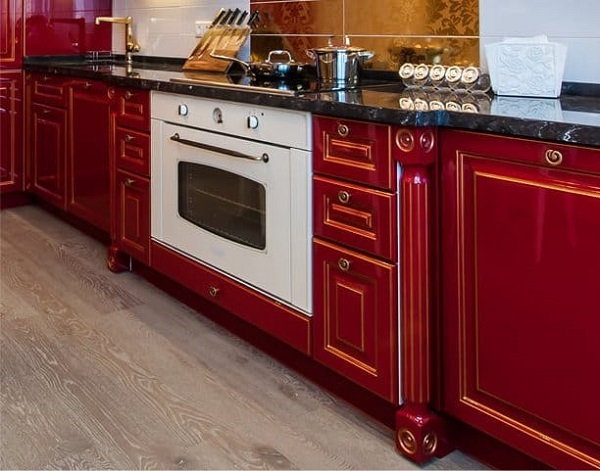
The third sign to contact a service center if you notice an unusual smell or smoke coming out of the oven when it is completely clean
Installation and operating safety
All models of gas ovens have several systems that ensure safe operation. So, the glazing of the door is made multi-layered so that the burning temperature does not reach the outer surface of the door. So that even a child looking at a chicken spinning on a spit through the "porthole" does not get burned. He will not be able to participate in operating the oven and open the door, thanks to the lock.
In addition, as mentioned above, heat is removed from the surface of the oven by an internal electric fan.
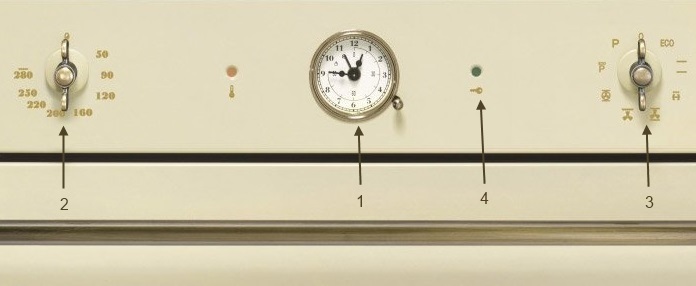
The control panel of a gas device is much simpler than that of an electric one. In addition to the timer (1), the panel contains a temperature regulator (2) and a mode switch (3). Power on indicator (4)
The gas supply is blocked automatically if:
- the burner accidentally goes out;
- a gas leak occurs;
- pressure in the gas line drops.
For oven installationworking on gas, it is necessary to invite a specialist. He will not only safely connect the gas, but also check the compliance of the technical device with the type of gas (natural or liquefied) and, if necessary, replace the nozzle.
Additionally you need install exhaust equipment. To connect to the electrical network and to gas, you need to contact a specialist.
The electrical outlet must be of the correct type and must be grounded. In addition to the above, it is necessary to take measures to ensure free access to the oven air and its removal. Therefore it is important link_webnavoz] prepare the site correctly [/ link_webnavoz].
Features of the use of equipment
Sometimes it happens that the purchased convection oven is not used in convection mode. It would seem that such an excellent function should attract any housewife and be used one hundred percent. In fact, this has not yet happened. The main reason is ignorance of the advantages and features of the function, and the need to make efforts to master it.
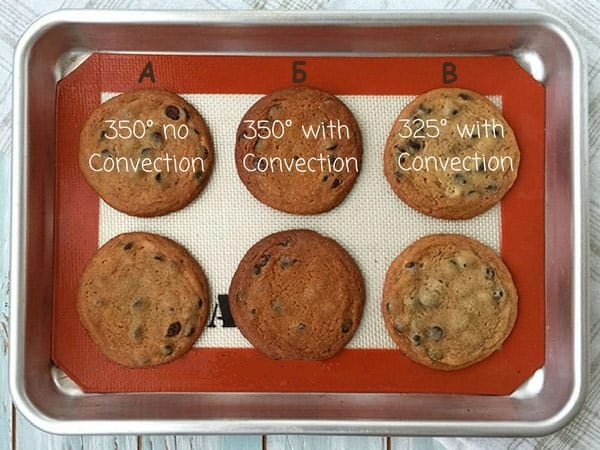
The difference in the quality of baking cookies in a conventional and convection oven. A - in a regular oven at a temperature of 350OWITH; B - in an oven with a convector at a temperature of 350 ° C; B - in a convection oven at 325 °WITH
The difficulty is that convection cooking requires different times. Cooking time in convection mode is a quarter less, with the exception of baking products closed - in foil or a sleeve.
Therefore, almost all recipes need to be converted - a 25% reduction in baking time is required. The same can be achieved by lowering the cooking temperature by a quarter. Not all housewives are ready for these innovations (to work hard with translation and get used to cooking in a new way).
To solve the problem and help the owners of modern ovens, manufacturers went in several ways:
- recalculated the preparation time of the main products and provided information in the instructions;
- took part in the production of cookbooks with recipes for convection devices;
- the ovens were programmed to automatically translate the timing / temperature when the convection function was turned on.
Unfortunately, gas ovens are not yet endowed with such (automatic translation) capabilities. Perhaps the situation will be corrected in the near future. But instructions, books and the Internet are available to any hostess.
Tips for choosing a convection oven
The choice of an expensive technical device is best done in a specialized store. Here you can get timely advice, purchase goods of guaranteed quality.

Model selection is often made for aesthetic reasons. Leading companies do not produce equipment in the same style or color scheme. Modern appliances will look good in any kitchen style
What is important to consider when choosing:
- Ovens are dependent (come with the hob, have a common control panel) and independent (installed separately). In the first case, choosing compatible gas engines and a separate hob can be a daunting task. Independent ovens can be located anywhere in the kitchen and can be easily combined with any hob.
- The capabilities of the hostess depend on the number of heating elements and fans in the design. More elements - more modes.
- Additional security features and systems deserve attention. For example, the presence of a blockage from child intervention.
- A weighty argument in favor of choosing a specific model is the availability of a service department in your city.
- The choice of model for aesthetic reasons also takes place. Fortunately, the leading companies do not produce equipment in the same style or color scheme.
The cleaning method is another significant parameter. Unfortunately, gas ovens are cleaned in the traditional way.
We recommend that when choosing an oven, first of all, turn to the products of manufacturers whose equipment has already been recognized as good-quality, reliable and trouble-free.
Conclusions and useful video on the topic
Useful information for housewives about the operation of the convection oven. Intelligently, understandably, and most importantly, the processes are explained and the nuances are shown.
A short excursion on the choice of ovens.
Choosing between a conventional and a convection oven, the buyer weighs his options and desires. The purchase of an oven even with a couple of convection modes gives the hostess a chance to become a master masterly use the opportunities provided by convection and reward yourself and your household amazing dishes.
Would you like to tell about your personal experience of choosing a convection oven and the features of its use in cooking various dishes? Or do you consider buying such a gas oven just a marketing gimmick? Express your opinion on this issue, give strong arguments for and against the purchase of gas equipment with convection - the comment form is located below.

